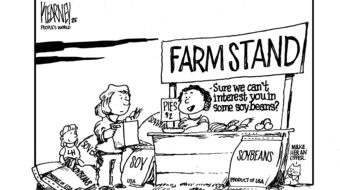Suburbs have become new centers of poverty, according to a new study by the Brookings Institution. Over one-third of America’s poor are now living outside of urban centers according to the survey released last week, entitled “The Suburbanization of Poverty: Trends in Metropolitan America, 2000 to 2008.”
Startlingly, the study points out that over one-third of all Americans live below 200 percent of the federal poverty level: “In 2008, 91.6 million people – more than 30 percent of the nation’s population – fell below 200 percent of the federal poverty level,” the report says.
Suburbs saw their poor populations grow by a whopping 25 percent during this period, which does not include 2009, the height of the Great Recession. The suburban working- class vote is a major source of voter discontent as seen in the recent Massachusetts senatorial election. Currently the Senate is considering important legislation that could provide 200,000 to 300,000 new hires. Economist Paul Krugman points out however, that 10 million jobs are needed.
The Brookings study indicates the greatest poverty growth continues to be in the Midwest, with some exceptions. For example, the greater Youngtown, Ohio, and Hartford, Conn., areas are tied for first place with poverty rates of 33.5 percent. Grand Rapids, Mich., is over 30 percent.
Chicago too is one of the areas that have been hit hardest. “Chicago ranks fourth in the nation among cities that have seen a large shift of poor to the suburbs, according to the study released last week,” writes the Chicago Tribune. “Nearly half of the Chicago area’s poor live in the suburbs, the study shows.”
In the current recession, the Sun Belt has become a new center of suburban poverty as well. The Brookings report suggests that “Western cities and Florida suburbs were among the first to see the effects of the “Great Recession,” indicated by “significant increases in poverty between 2007 and 2008.”
The report continues, “Sun Belt metro areas hit hardest by the collapse of the housing market saw significant gains in poverty between 2007 and 2008, with suburban increases clustered in Florida metro areas – like Miami, Tampa, and Palm Bay – and city poverty increases most prevalent in Western metro areas – like Los Angeles, Riverside, and Phoenix.”
The Brookings report will come as no surprise to working-class families in Ohio. Already in 2008 the Warren Tribune pointed out that “a third of Trumbull County’s population is on some sort of public assistance, and they’re not just living in the cities anymore, says the head of the Job and Family Services department.”
Tracing the same time period as the Brookings study, the Warren Tribune observes, “In May 2002, there were 14,172 recipients of food stamps and money for emergency car repairs, clothing, shelter and utility payments in the county. In April 2008, the number of recipients jumped 55 percent to more than 22,000. Communities like Cortland increased 63 percent; McDonald 92 percent; and Mineral Ridge 85 percent, the numbers show.”
Overall the number of people living in poverty in the state of Ohio has jumped nearly 40 percent over the last decade. Phil Cole, executive director of the Ohio Association of Community Action Agencies, says this points to the need for jobs and job training programs. “Now people will say that we still cannot afford it,” Cole said. “But can we afford to continue to pay Medicaid and unemployment instead?”










